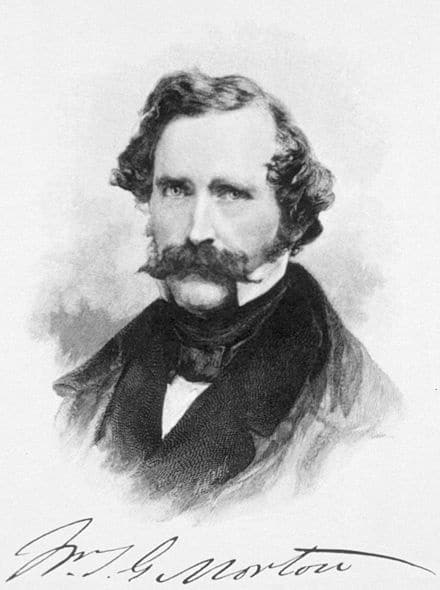Each October 16 I give a silent thanks to one of the Massachusetts men who helped to eliminate pain in surgery: Dr. William Morton (1819-1868). He was born in Charlton, Massachusetts, where my grandmother grew up.

As a dentist, he witnessed the incredible pain his patients endured. During his time, there were no pain killers for surgery. Medicine was just at the beginning of becoming the profession as we know it today. Even as late as 1874 in the US, medical schools were little more than trade schools. Applicants didn’t need undergraduate degrees. There was no consensus on treatment, no models for medical studies. Most physicians still followed the Hippocrates theory of the “four humors.”
Disease and deformity were rampant, especially in the overcrowded and teeming cities of the world. The cause of infection was not discovered yet; there was no understanding of germs. And the pain of surgery was intolerable. Limb amputation most common type of surgery and the “best” surgeons were the fastest: the best could remove a limb in five to ten minutes. But blood transfusions were not available yet, and patients often went into shock and died. It’s no surprise that prior to 1846 little elective surgery was done.
All of that changed on October 16, 1846. Morton first publicly demonstrated the use of inhaled ether as in surgery at Massachusetts General Hospital, in the now named “Ether Dome.” Just two weeks prior, he had performed a painless tooth extraction on patient Ebenezer Hopkins Frost, using ether. On October 16, using Morton’s ether, Dr. John Warren removed a tumor from the neck of a patient—without pain. The news spread like wildfire around the world. Oliver Wendell Holmes—physician, lawyer, poet, and founding father of the Supreme Court—dubbed it “anesthesia.”
The medical breakthrough was not without its controversy. Correct dosages were not yet known—that would be experimented with by Dr. John Snow of England. Morton’s partner, Dr. Wells, objected to Morton claiming to be the only one to have discovered this, and trying to patent it. Their partnership never recovered. The patent was never enforced, and ether soon came into general use.
Morphine had been first isolated between 1803 and 1805, and Merck began selling morphine commercially in 1827. With the invention of the hypodermic syringe in 1853, morphine use spread. Localized anesthesia began to be used in 1884 by injecting cocaine into the wound location. Pain was relieved, but addiction, even among doctors, spread.
MGH honors the October 16 event in its Ether Dome, which is open to the public. Between 1821 and 1868, more than 8,000 operations were performed there. Today it is a teaching amphitheater and historical landmark. Visitors can appreciate the architecture and study the artifacts related to the elimination of pain, so important to those suffering, like our patients with bleeding disorders.
Before whom, In all time, Surgery was Agony
By whom, pain in surgery was averted
Since whom, science has control over pain
— Morton’s tombstone, Mt Auburn Cemetery, Cambridge, Massachusetts


1 thought on “Pain and Gain”
This tribute really strikes a chord. As someone with a bleeding disorder, I know firsthand how vital pain relief is in medical care.
Comments are closed.